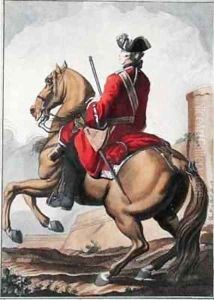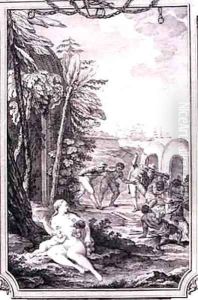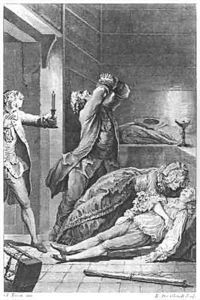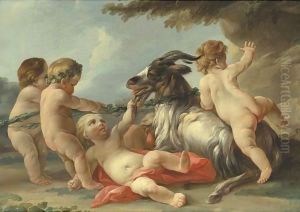Eisen, Charles Joseph Dominique Paintings
Charles Joseph Dominique Eisen was a French painter and engraver born in 1720 in Valenciennes, which at the time was part of the Spanish Netherlands (now France). He was known for his Rococo style, characterized by lightness, elegance, and an often playful approach to the arts. Eisen was the son of François Eisen, also a painter, from whom he initially learned the art. His family moved to Paris when he was young, where he furthered his education in art under the tutelage of notable painters such as Jean-Baptiste Le Prince.
Eisen's work as an illustrator brought him significant acclaim. He contributed illustrations to numerous books, including editions of the works of the French writers Jean de La Fontaine and Voltaire, which became celebrated for their sophisticated and whimsical qualities. His illustrations were highly regarded for their finesse and the way they captured the spirit of the texts they accompanied. Beyond book illustrations, Eisen also excelled in painting and engraving, creating works that were admired for their delicate and detailed representations of contemporary life and mythology.
Despite his success, Eisen's career was not without controversy. He was appointed as a draughtsman to the king and received commissions from the royal court, but his life was also marked by periods of financial difficulty and scandal. His reputation was somewhat marred by his libertine lifestyle and the erotic nature of some of his art, which led to his dismissal from the court of Louis XV.
Eisen spent the latter part of his life in Brussels, where he continued to work until his death in 1778. Today, his art is recognized for its contribution to the Rococo movement and its influence on the development of French illustration. Eisen's legacy is preserved in the collections of major museums and libraries, reflecting his enduring impact on the world of art and illustration.



